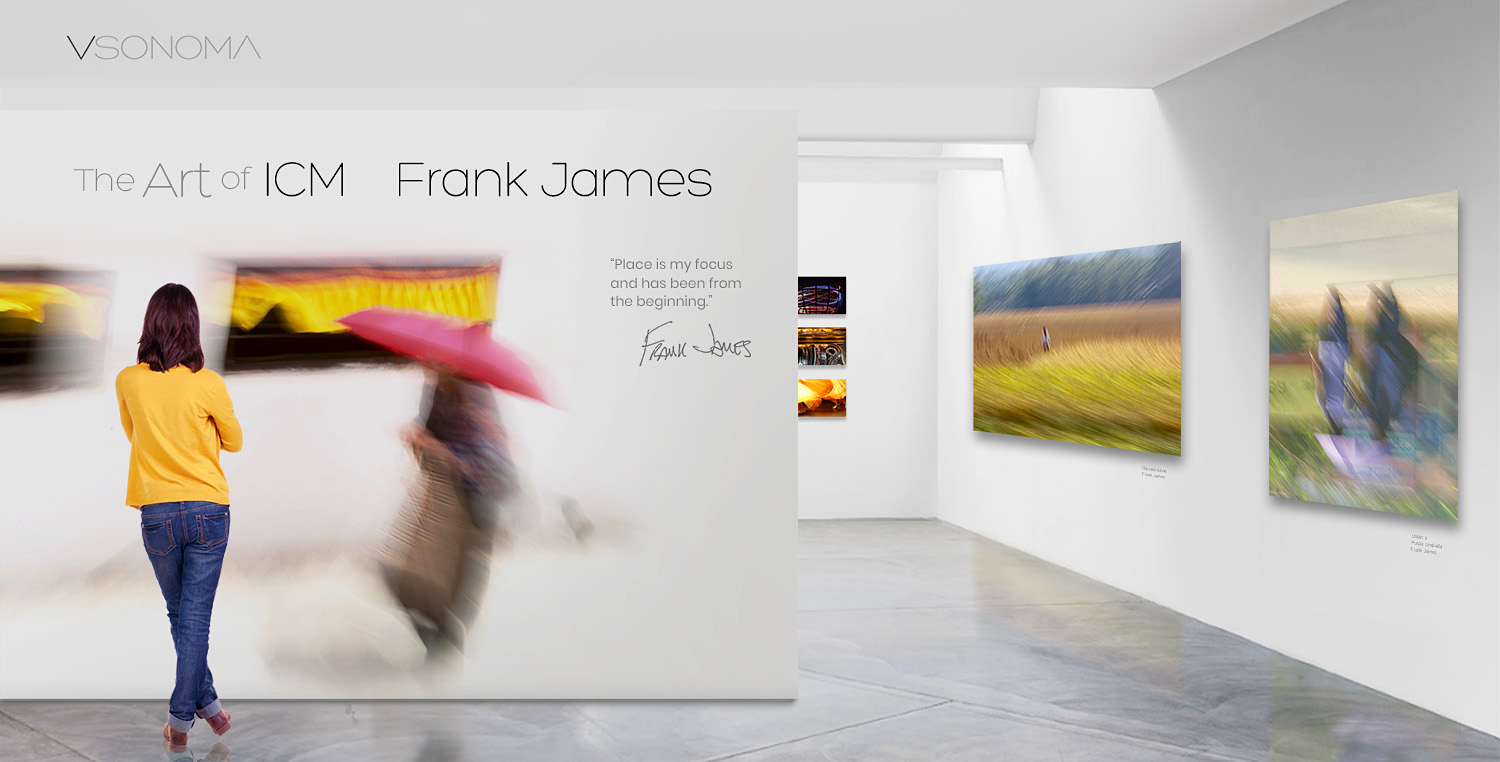
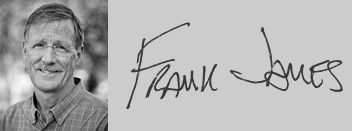
The ICM photographs of Frank James evoke a sense of fantasy in every sense of the word across not one, but two fronts. First, consistent control of the often unpredictable technique of Intentional Camera Movement (ICM) is a dream come true. Second is Frank's good fortune (and hard work) to utilize this photographic skill in locations most of us have only fantasized about.
Frank's work was among a small handful of ICM practioners that I was fortunate enough to view on a regular basis through a couple Facebook photo sharing sites. I was taken on a ride by his eye and masterful technique through wonderlands of landscape and culture. A road that VSONOMA is excited to showcase in our current show, Frank James - 'The Art of ICM'.
— Mark Wegner
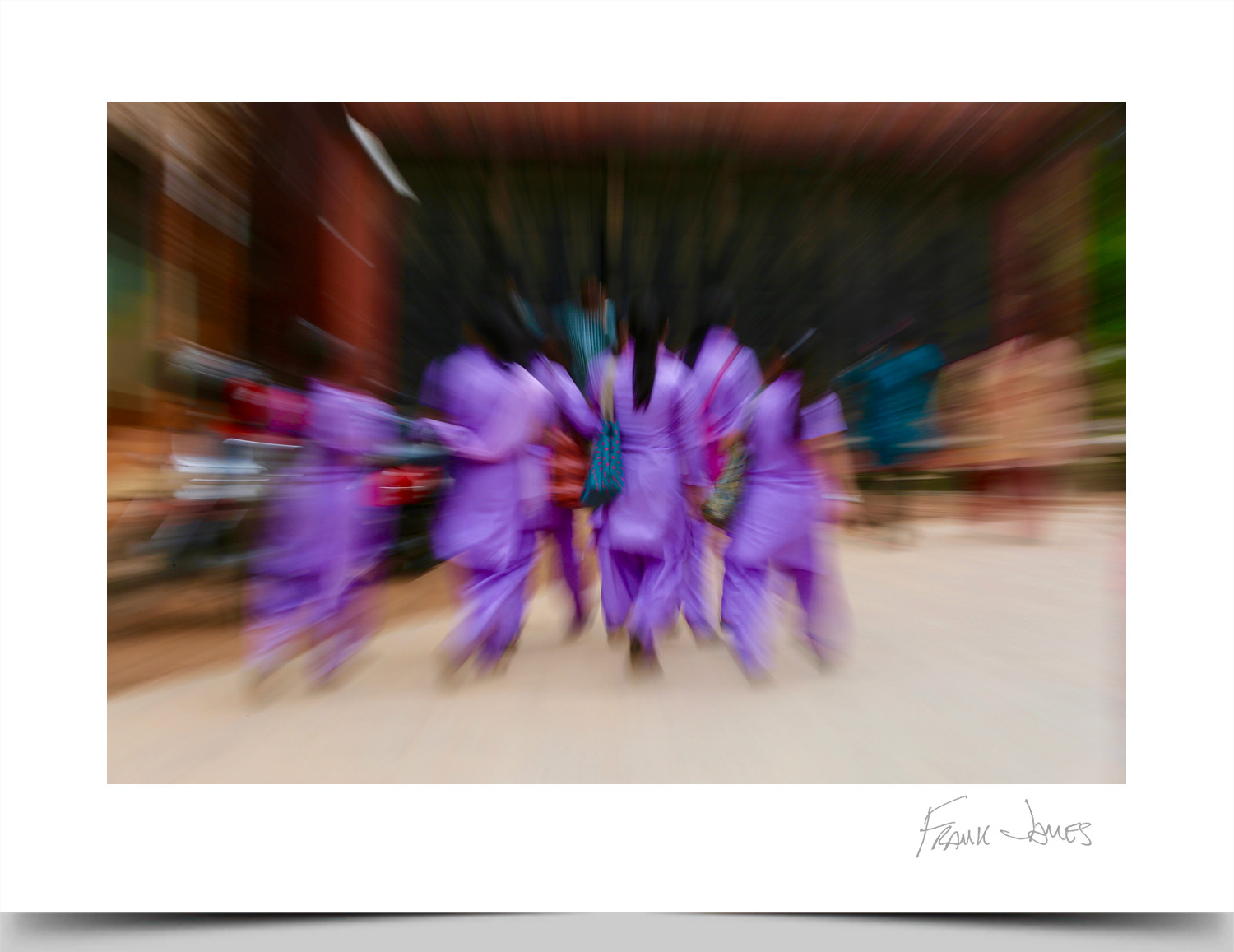
School Girls, Katmandu
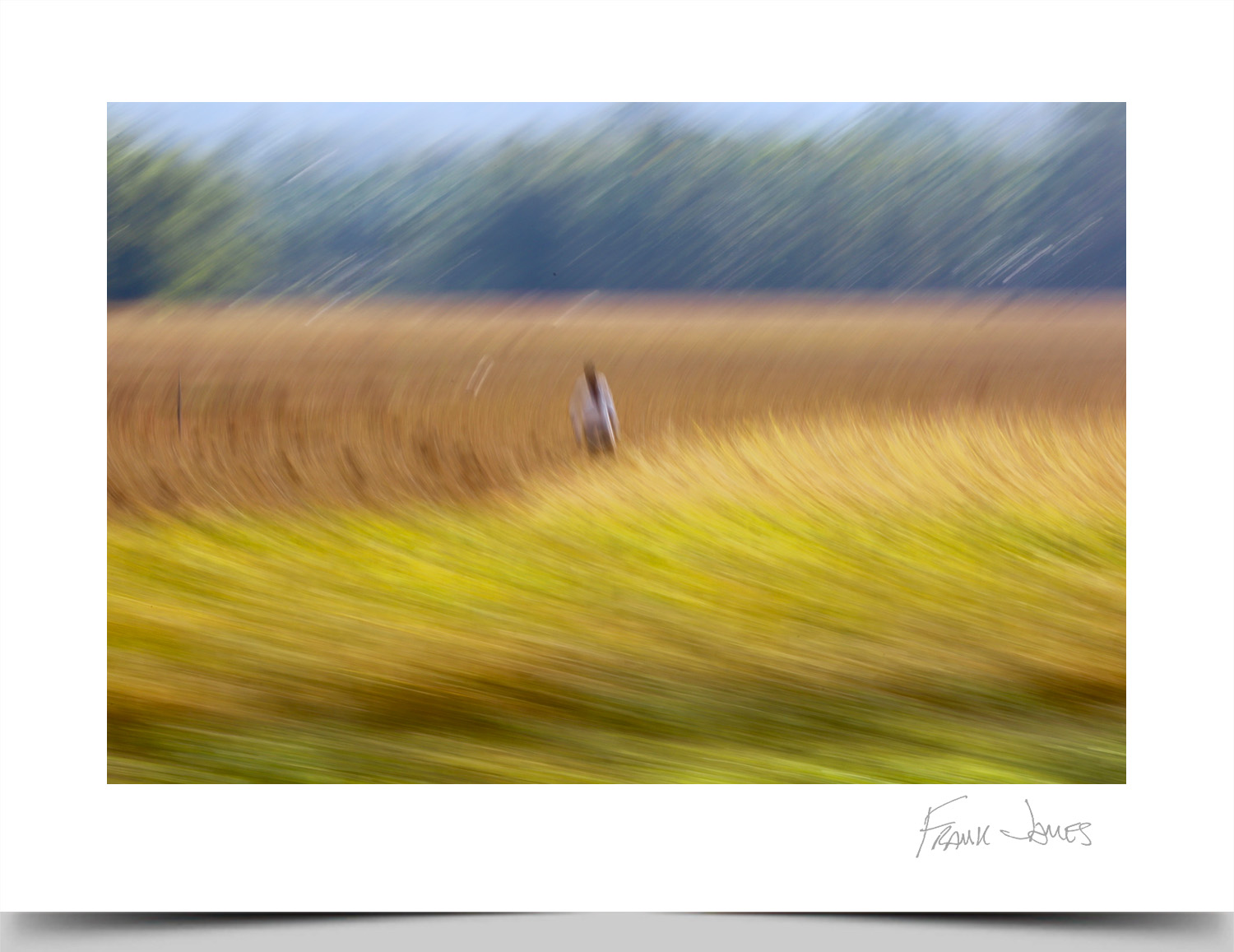
Harvest, Assam
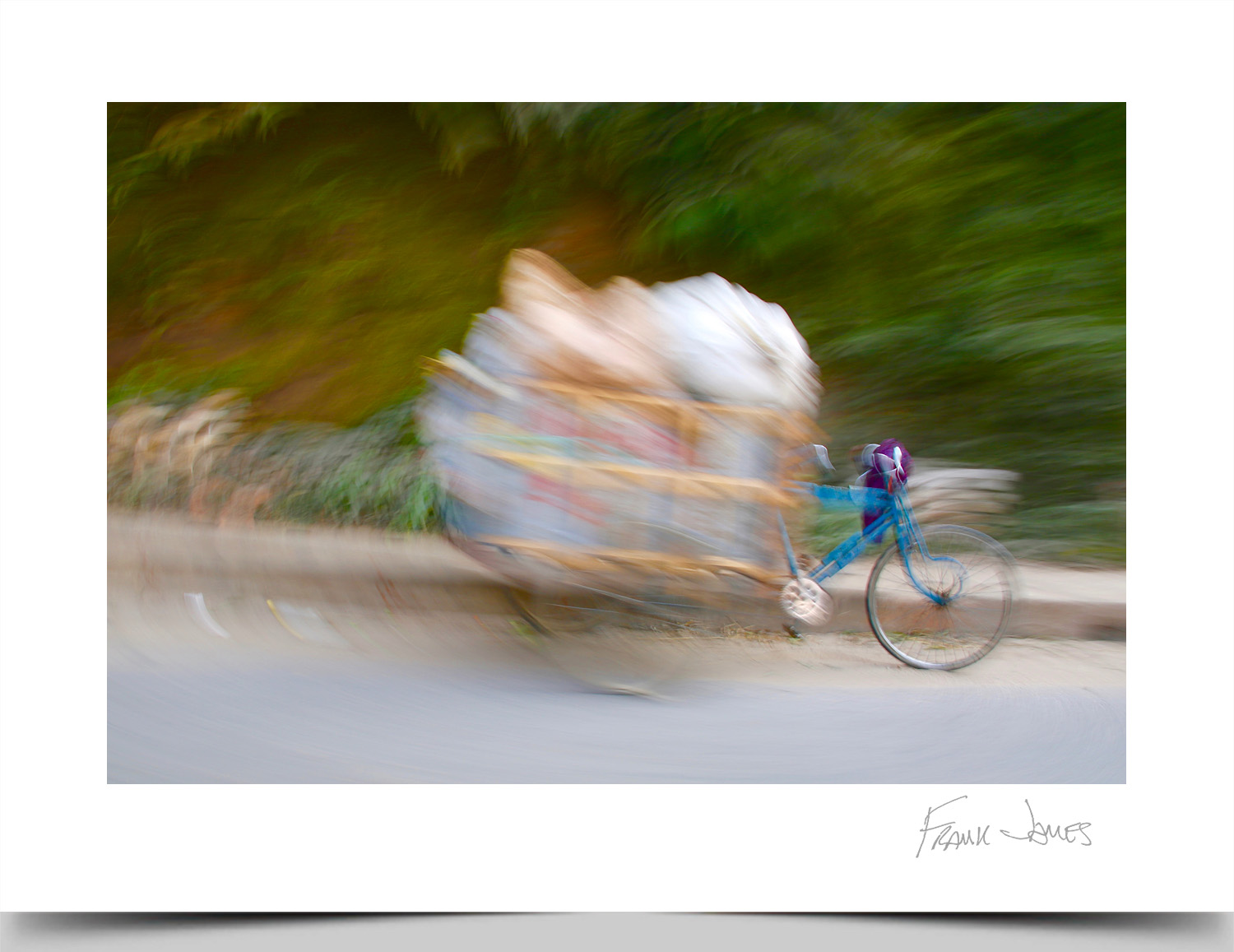
Delivery Truck, Nepal
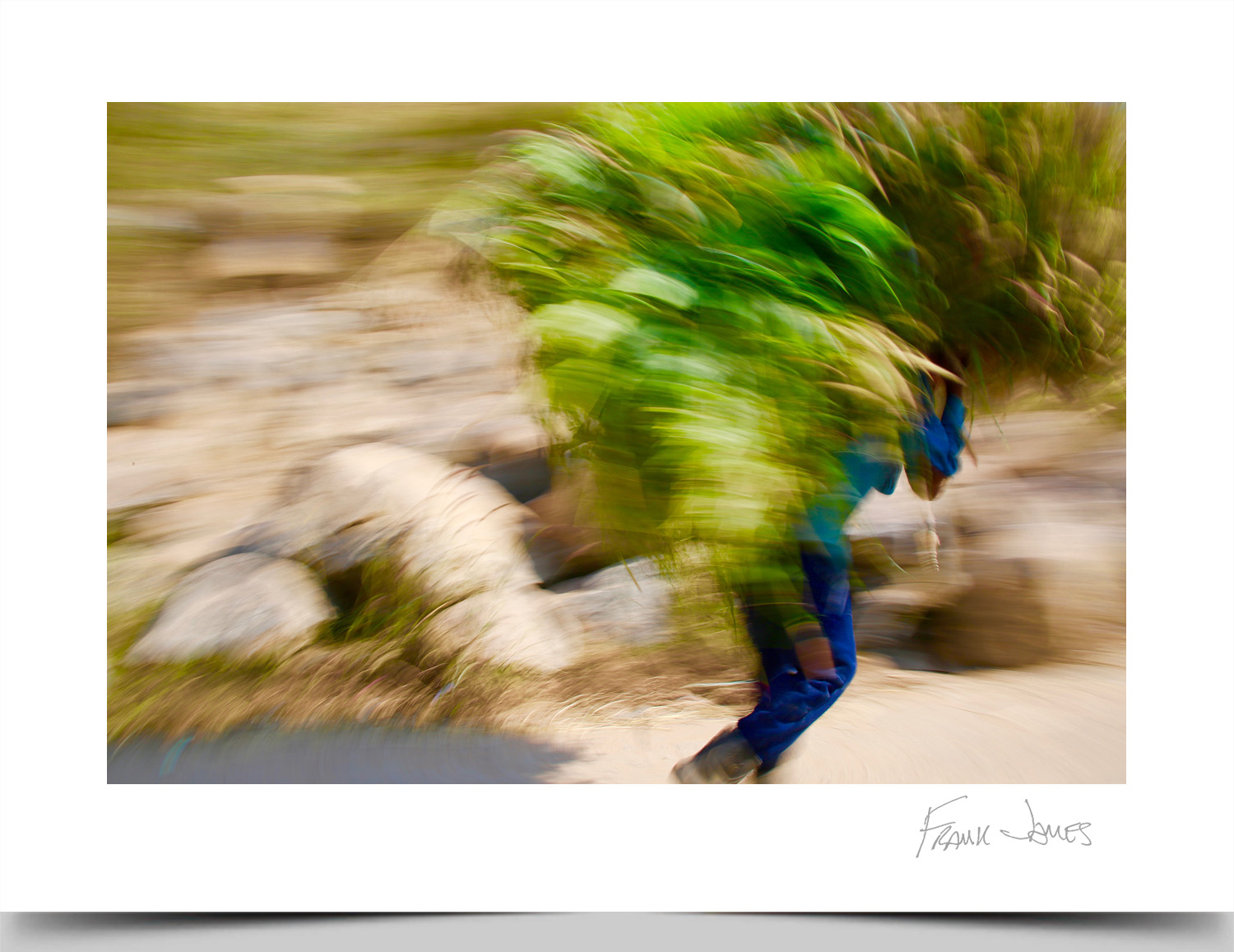
Heavy Load, Nepal

Woman and Two Girls, Assam
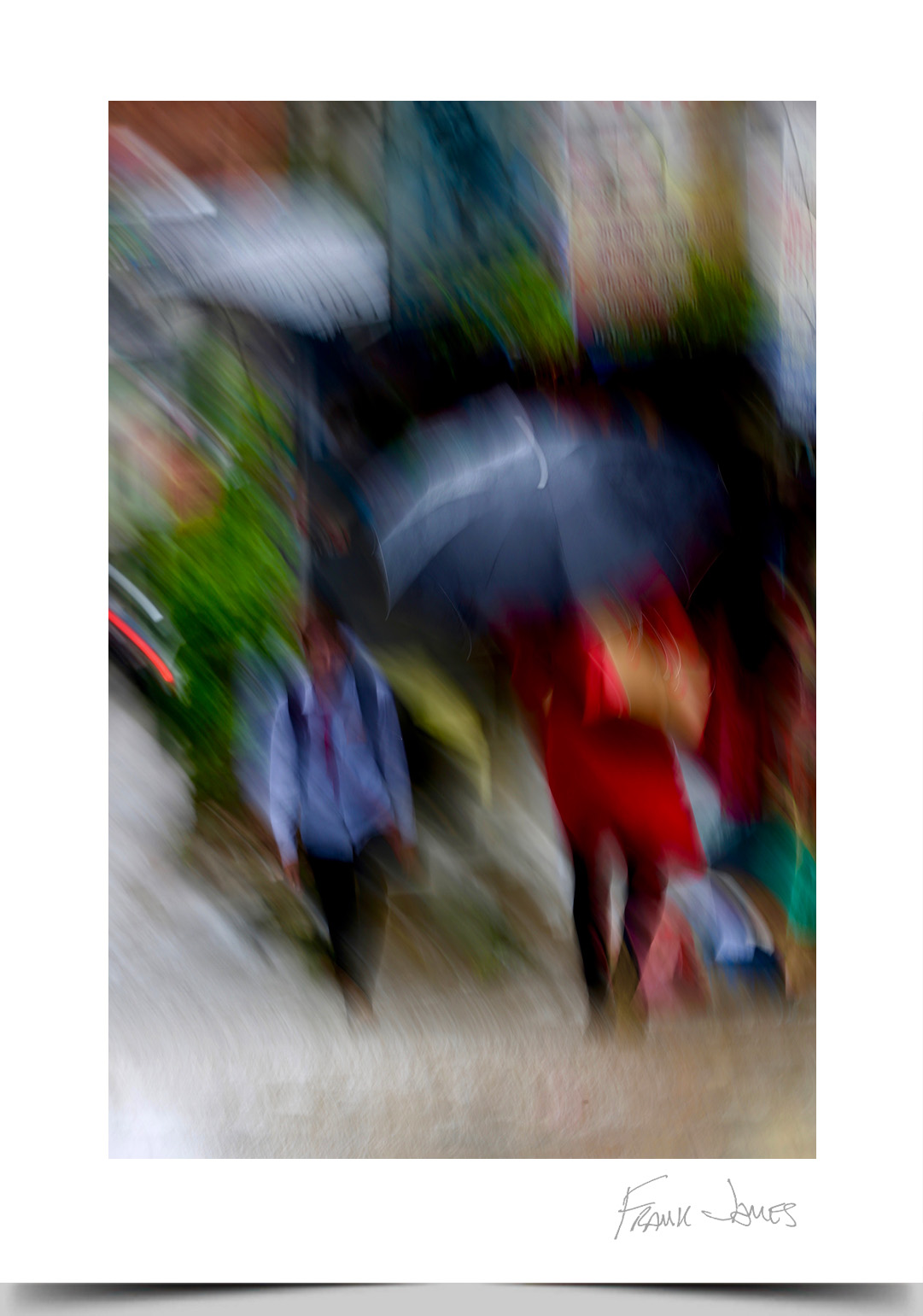
Lady in Red in the Rain, Katmandu
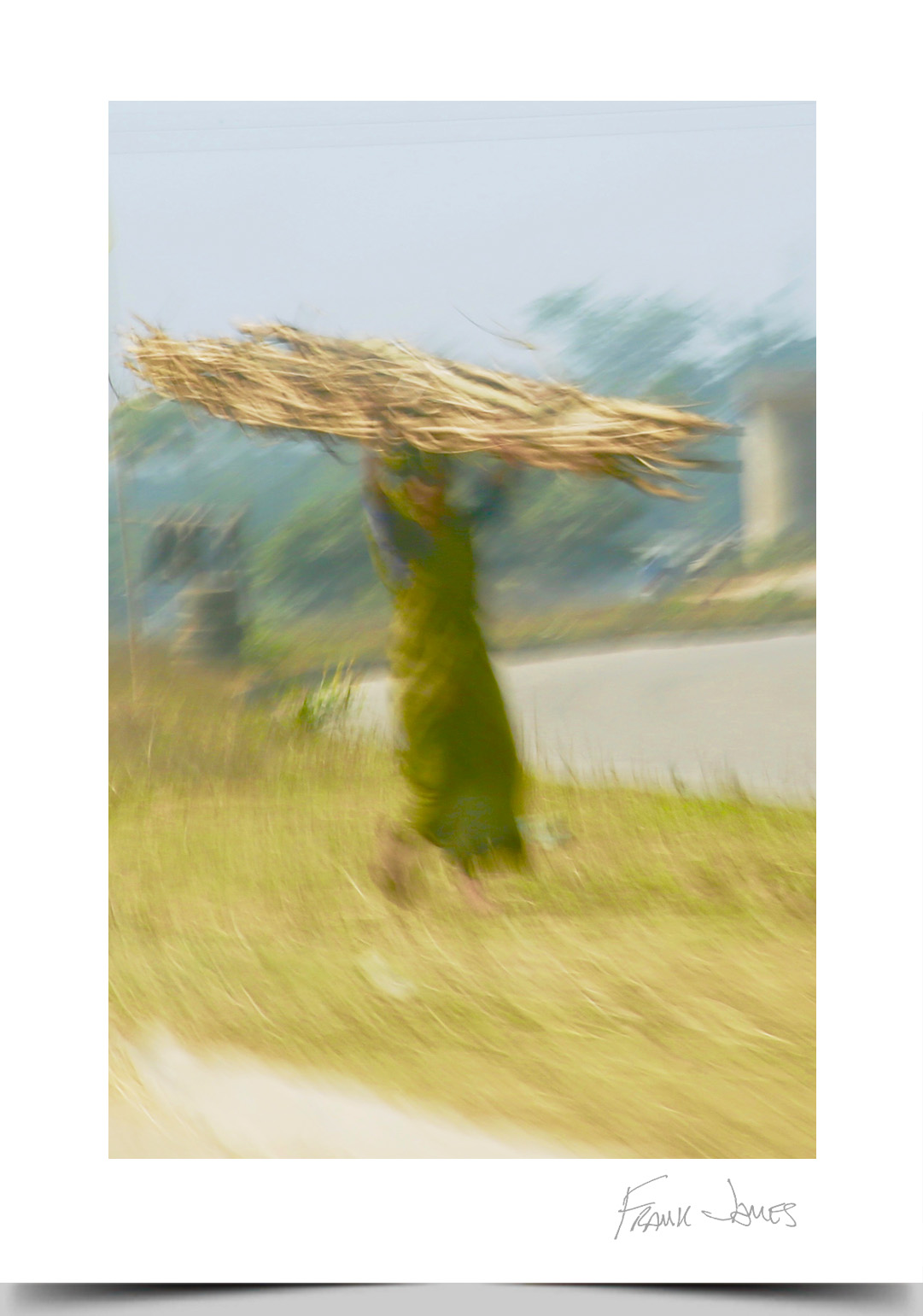
Elder Carrying Wood, Assam

Silk Road Dancers, USA
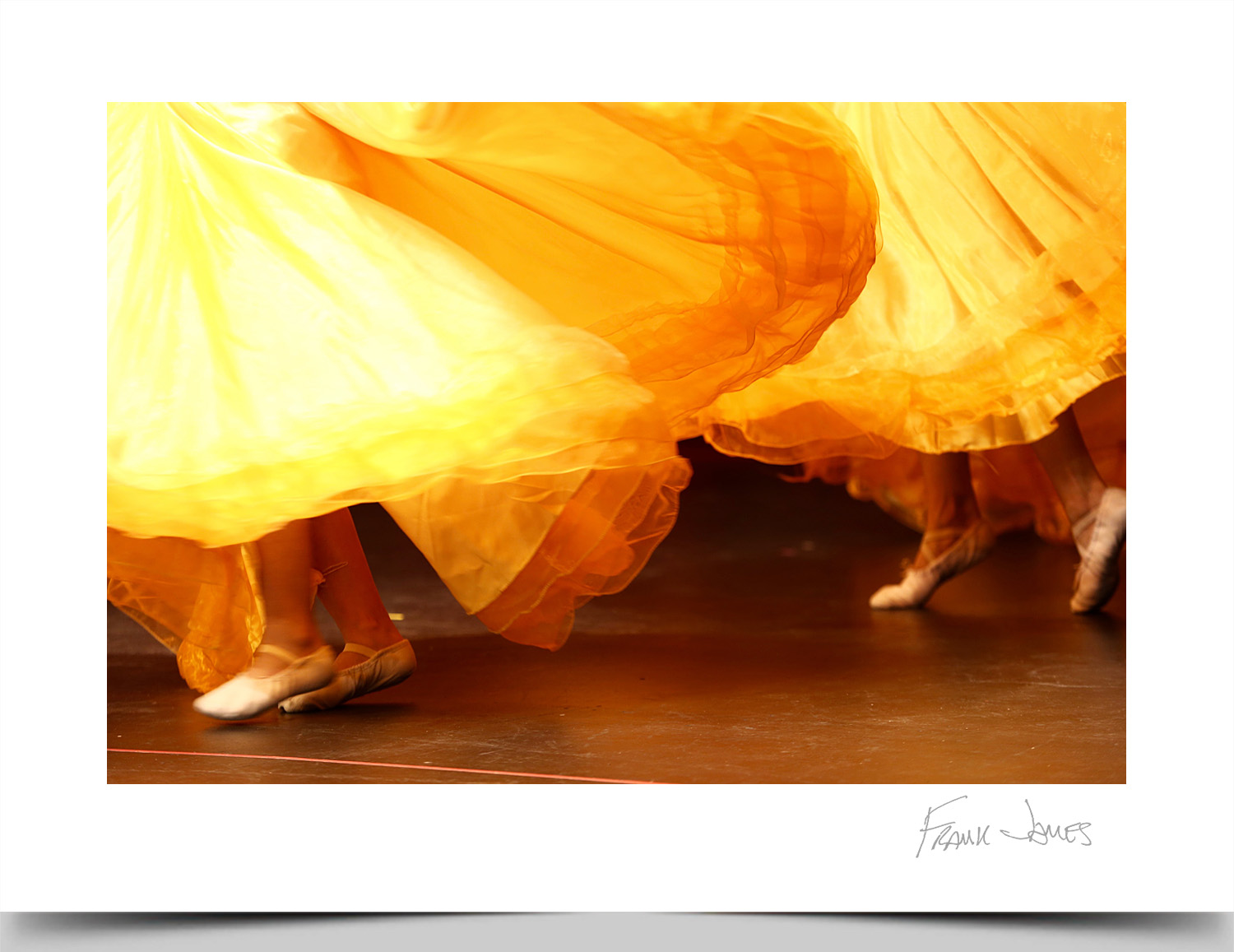
School Girls, Katmandu
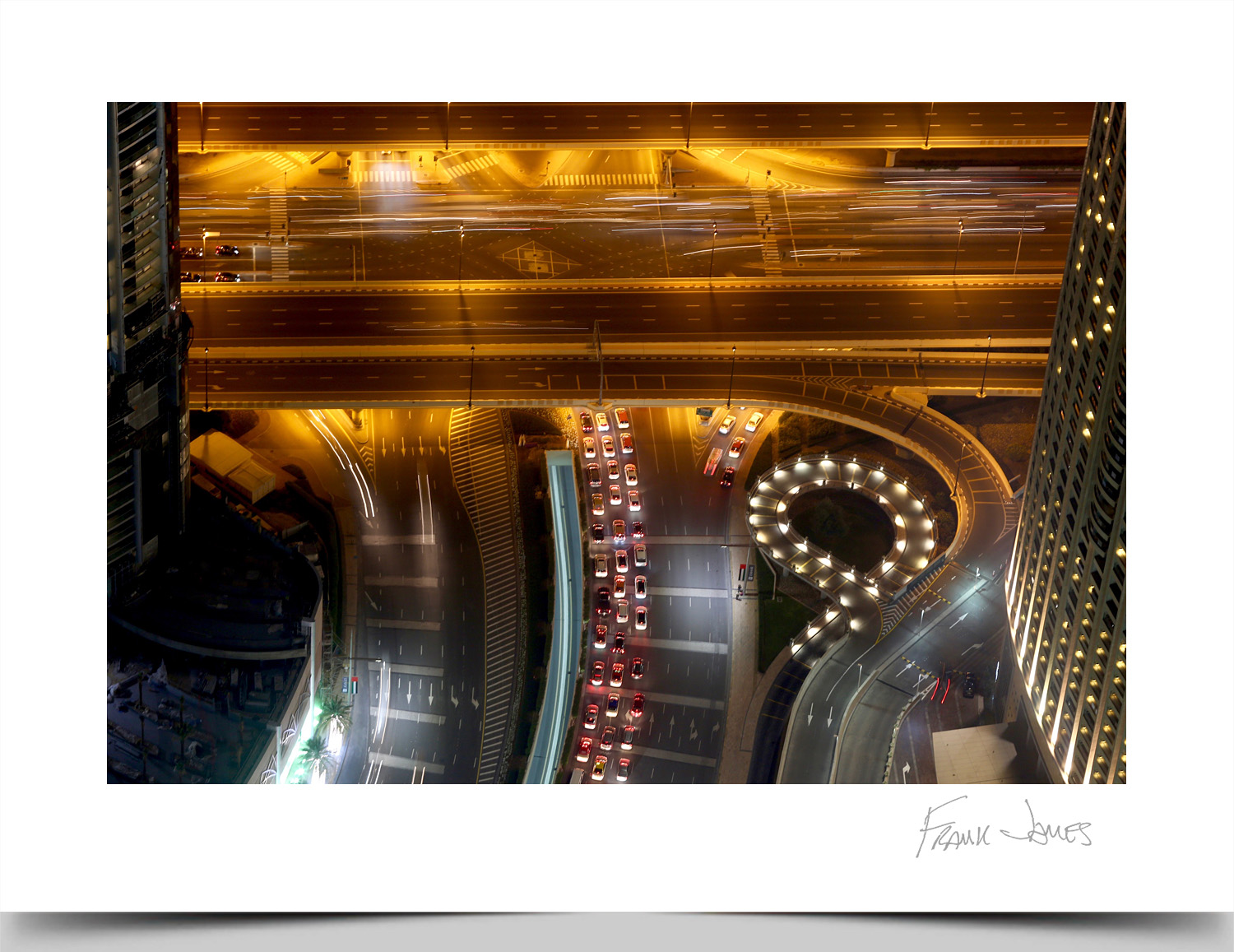
Looking Down from the Burj Khalifa, Dubai
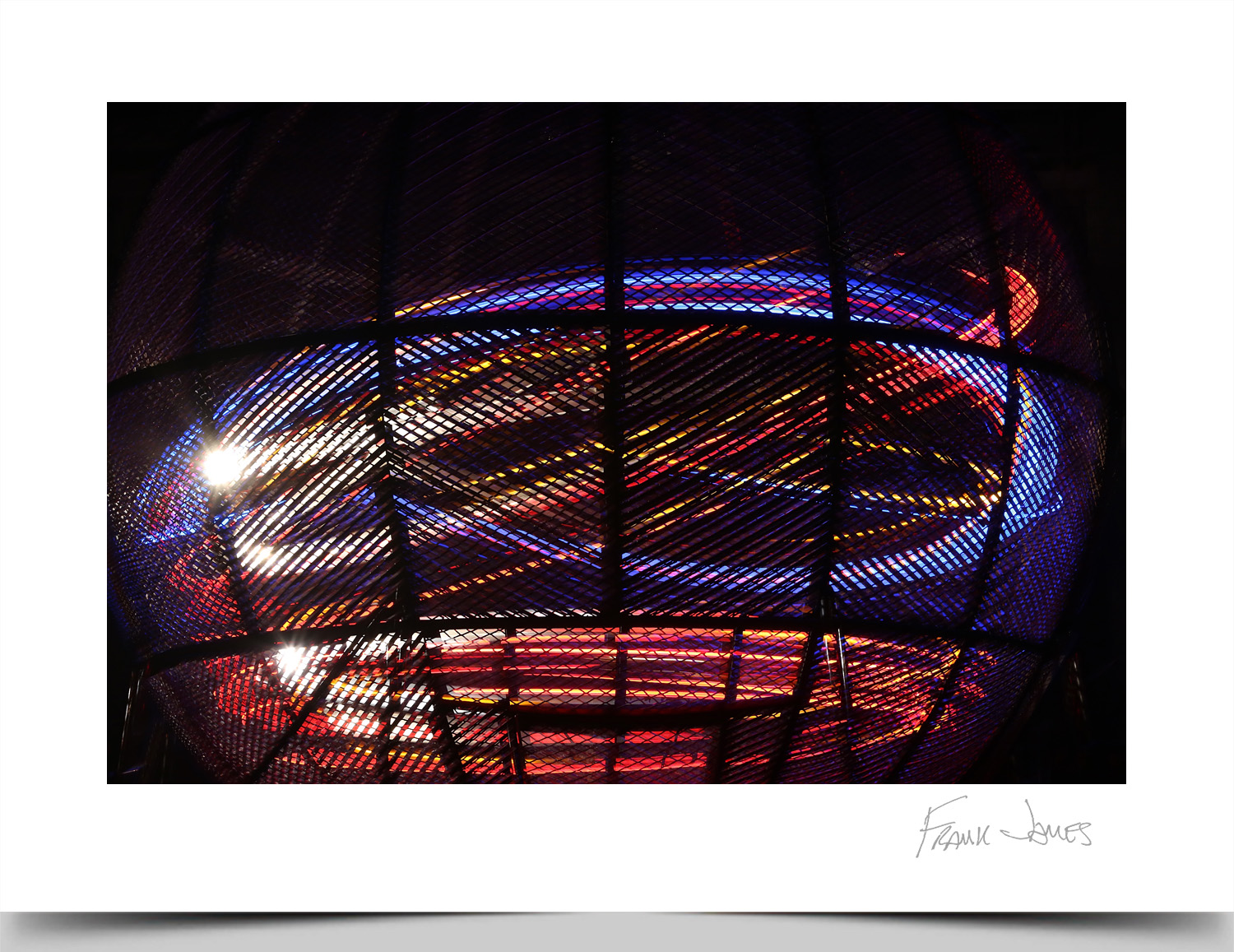
Four Motorcycles-Beijing Acrobats, China
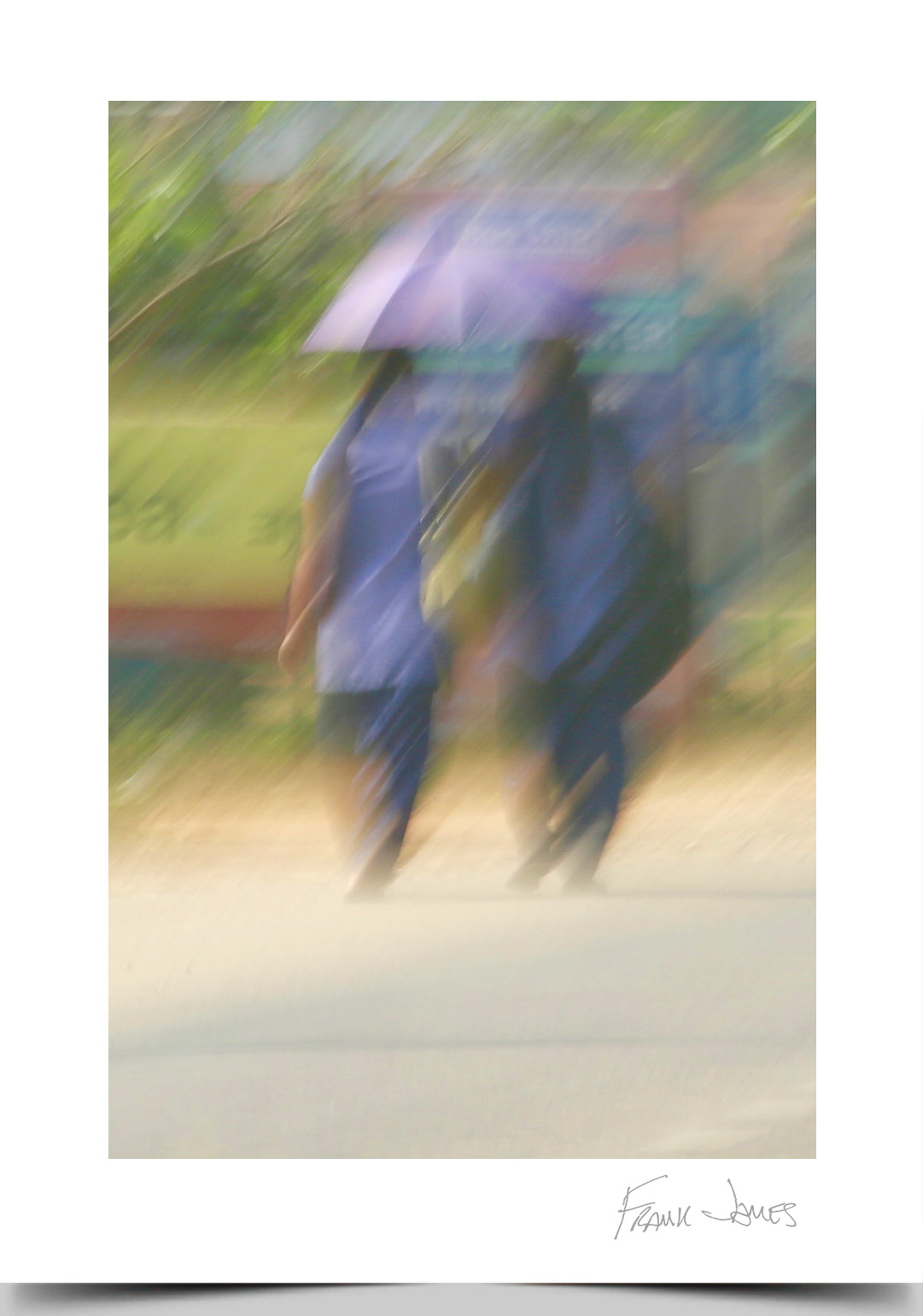
Under the Purple Umbrella, Assam
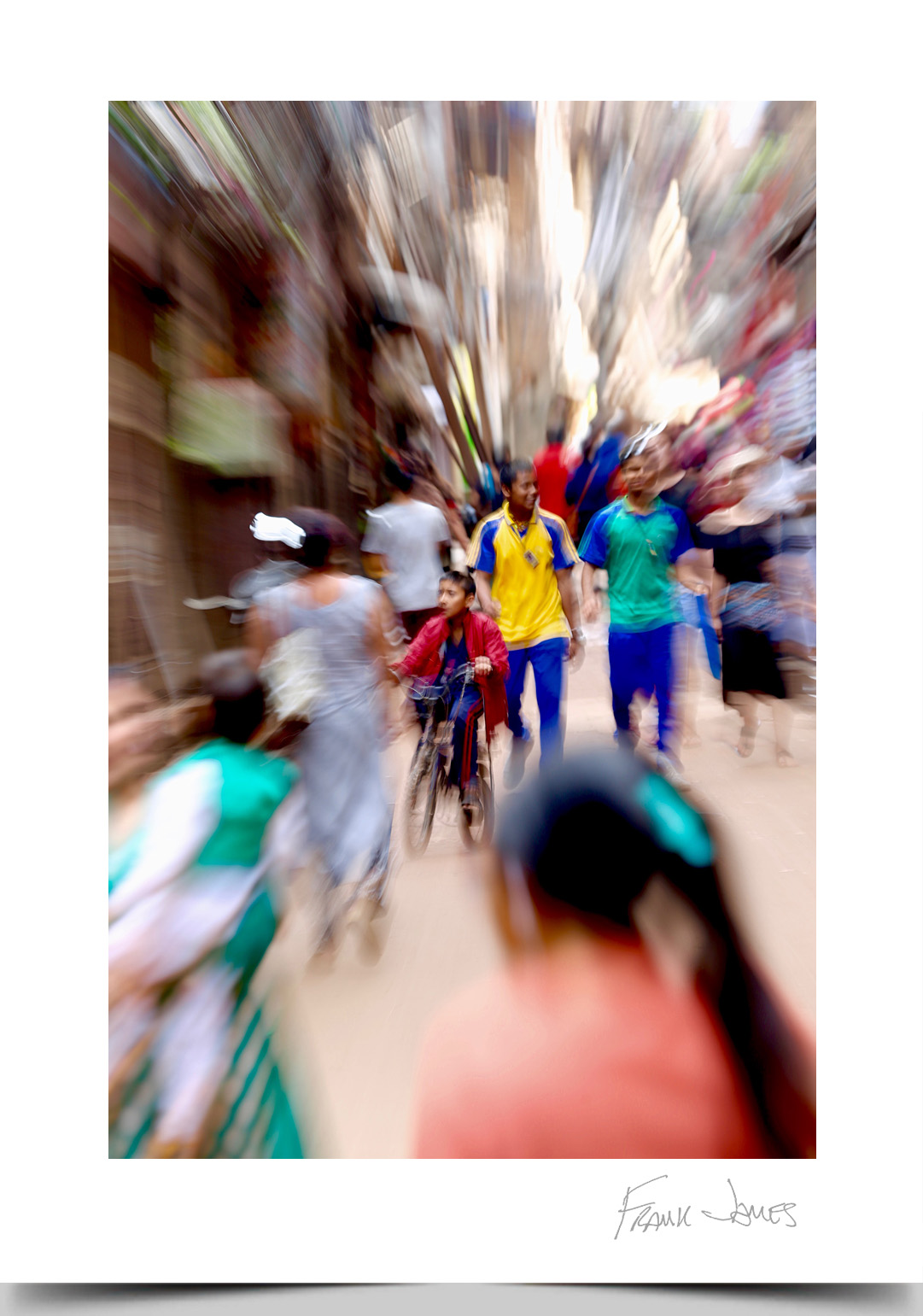
Street, Katmandu
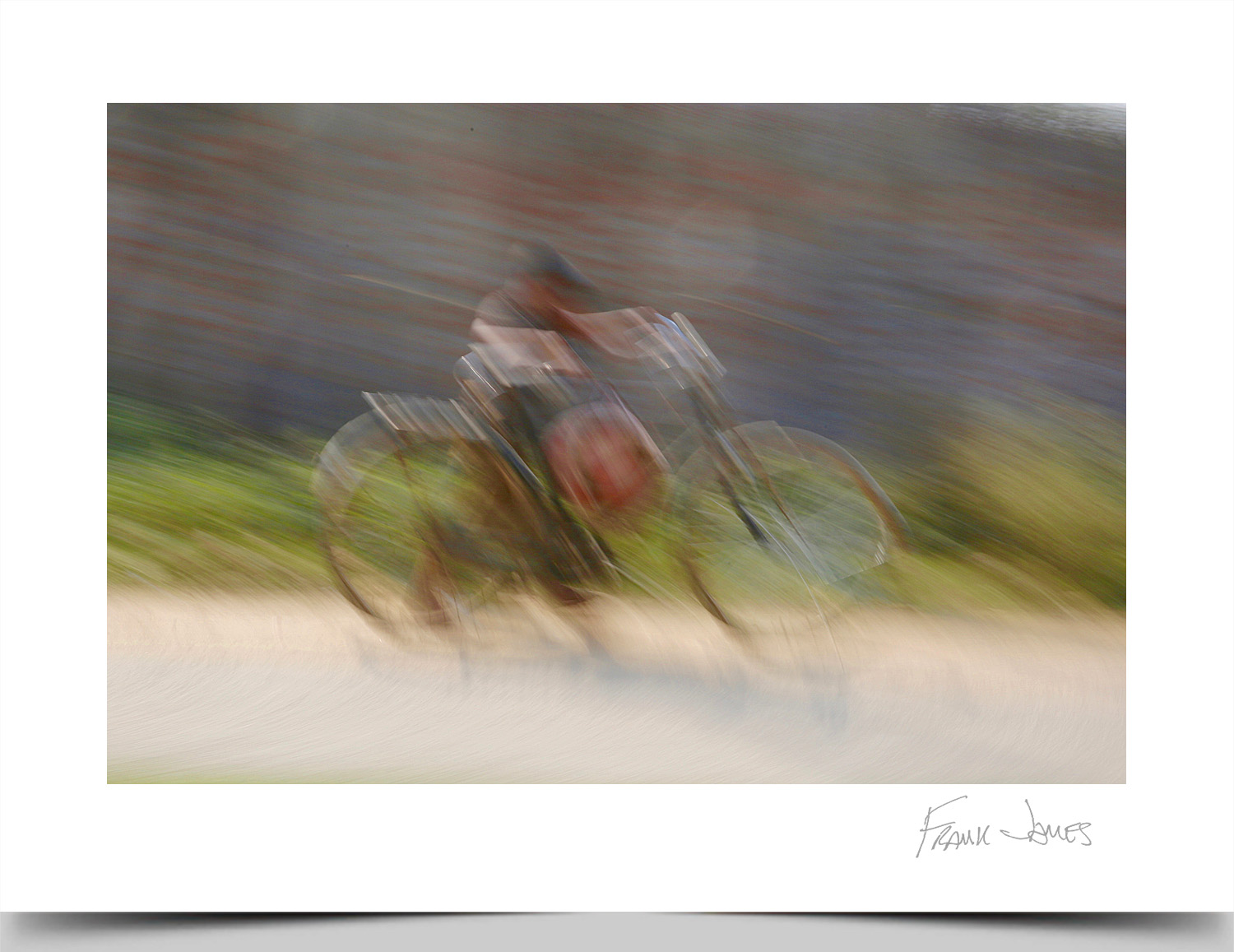
Kids at Work, Nepal
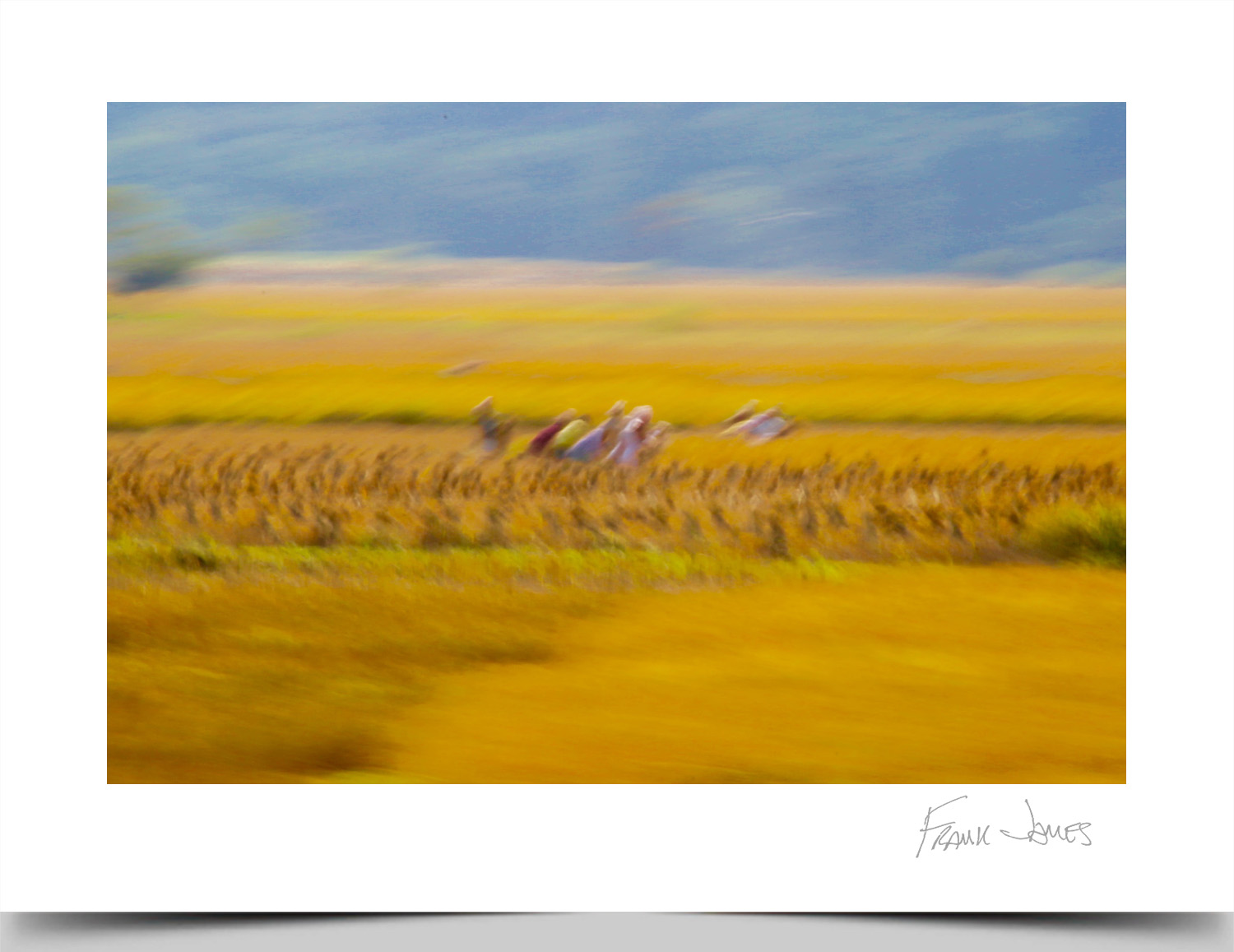
Village Harvest, Assam
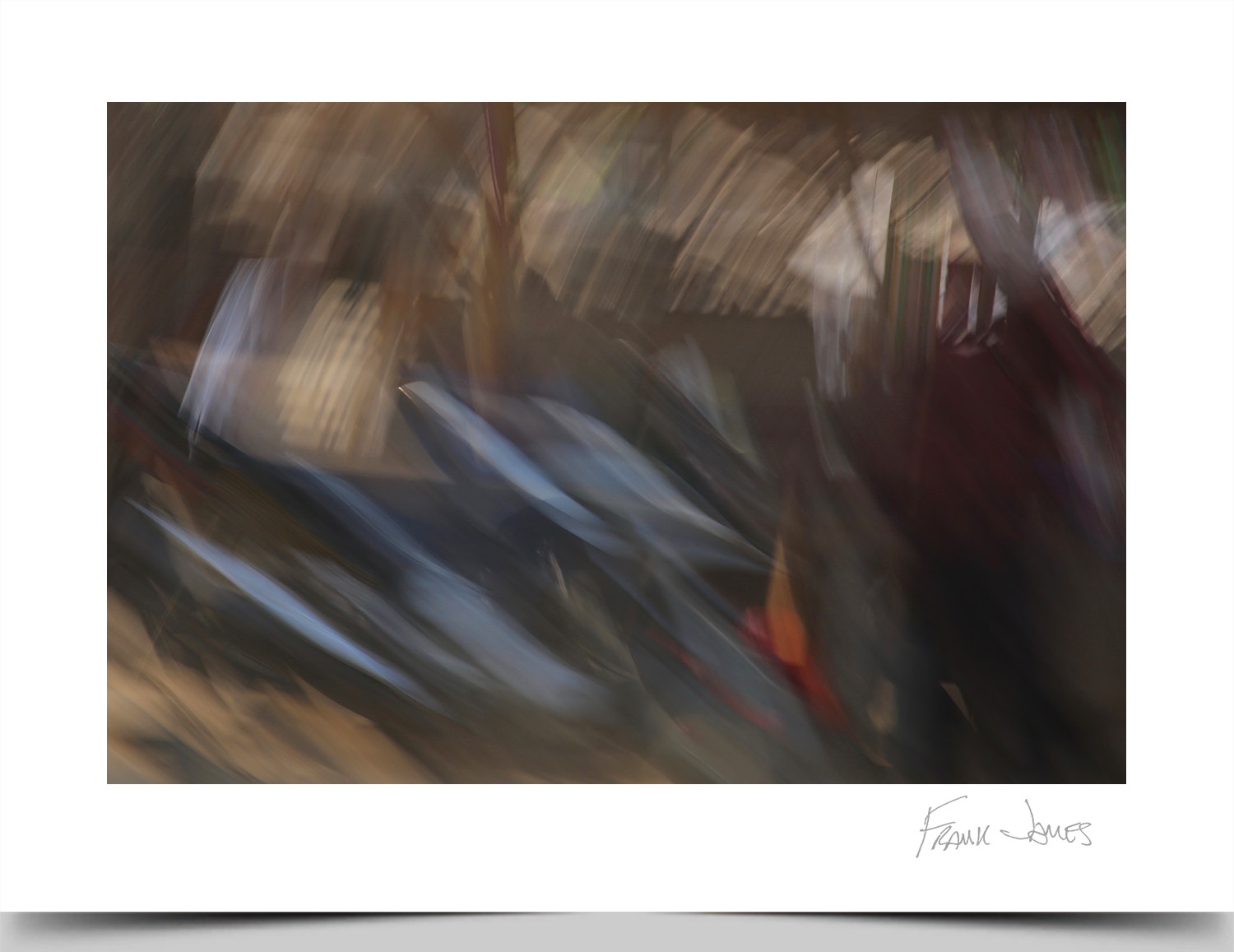
Roadside Abstract, Arunachal Pradesh, India
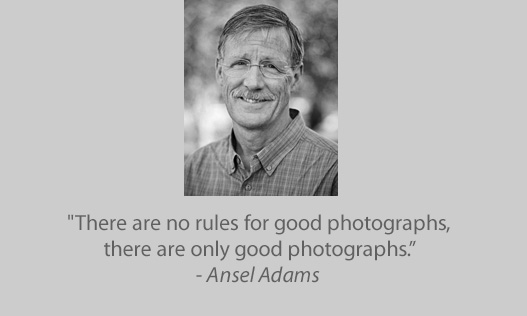
Most of my photography is about ‘place’. Over the past few decades I have traveled to remote regions of the world and become involved with village communities. Taking reasonably good photos in India and Nepal is so easy with all the color, movement and pageantry. Many of these photos were taken while traveling in either Nepal or India. This show represents a particular subsection of my work that is focused on Intentional Camera Motion photography, although in most of these photos not only the camera but the photographer and the subjects were in motion too. The fun part was getting the subject to be a point of stillness and focus while all else was in motion. The typical pan or zoom functions are long gone in this approach, though they are sometimes used to get the subject to stop moving for that split second.
VSONOMA: How did you initially get interested in Photography?
When I was in high school and then college I spent all day shooting film and all night in the dark room. Then as I began to wonder about a career in photography my best friend who was with me shooting all day and night gave it a try. Kit Burns was a very talented photographer but ended up mostly doing weddings and was not happy with his lot at the time. That pushed me away from wanting to try to become a professional in the late 1960’s. Kit went on to become an architect and eventually a significant portion of his work was in architectural photography, which most of us are not very good at. I had come from a very modest home and needed more security as well. I first wanted to teach, and then studied language and society as an undergraduate and finally in a PhD program at Boston University. Deciding that books were a bloodless substitute for life I dropped out and returned to do premed and eventually medical school.
VSONOMA: ...and when did you get serious about it?
Even while in medical school I fortunately was able to travel extensively (the Soviet Union, Europe, South America) and began to do a limited amount of photography, mostly focused on capturing the people and the places that helped to define who they were. Eventually through my professional work and travel I returned to photography in a more sustained way about two decades ago. I had mostly focused on my medical work but gradually had time and the opportunity to do more photography. We took medical students to Nepal and India to do service learning projects and I studied how those experiences changed the trajectory of their careers. But documenting those experiences in photos as well.
I also traveled with high school and college students teaching and providing healthcare, spending time in Thailand, East Timor, Bolivia, China and many other places. My son worked in Bolivia for a year and my daughter has been in East Timor for the past 13 years and my wife is from Hong Kong so family also took me abroad a significant amount of time. During this time I got my first Canon and a selection of lenses that made the range of photos expand dramatically. Digital is so different from film but it was an easy transition with the lower cost, not having to breath the fumes in the dark room and the amazing tools within any computer to manage photos. I do very little manipulation of my photos and have not used Photoshop or other photo tools other than the most basic formatting and clean up. Even those tools along with storage and organization helped launch me back into photography in a major way.
VSONOMA: What are your favorite subjects or areas of interest?
Place is still my focus and has been from the beginning. Trying to capture the people, culture, values, and feelings of a place is the challenge I struggle with. I find it much easier to do the ICM work in Nepal and India, the subjects are often so much more colorful and people are so much more accessible than here in the US. Life is much more full in so many ways in those nations. I shot some travel photography but mostly I focus on people and the interface with environment. For example the shot of the street from about halfway up the Burj Khalifa in Dubai shows all cars, no sidewalks, vast tracks of lighting, endless action even late into the night, so much wealth but so much isolation and separation from nature and other people.
VSONOMA: Please tell us a little about your style and process.
The ICM work was really started out of boredom. I was traveling to Jhamtse Gatsal Children’s Community in Arunachal Pradesh, India. The trip takes three days by jeep and you have to drive over the Himalaya over a 14,000 ft pass at the low point. The roads are very rough and bumpy. Over the three days I started trying to use all the motion to some good. Trying a variety of ASA, ISO, f Stops and shutter speeds. Eventually over a couple of days and literally thousands of trial and error photos I began to see that there were shot that looked more like abstract paintings than photographs. And then eventually I struggled (and still do struggle) with wanting to have that beautiful face captured fresh and clear with only the context in motion. With the person usually moving in one direction, the vehicle often moving in the opposite direction (as well as up and down) I have found that magical focal point twisting around the axis of their face hard to bring home as sharp and focused as I have been seeking, so there is always more to do. I have tried to do the same in the US but we drive too fast, people are much less accessible and honestly we have the most boring and dull clothing of any country on the face of the earth.
VSONOMA: Do you cite any other photographers, past or present, as mentors or having a special influence on your work?
I think everyone in my generation owes a debt to Ansel Adams. But the inspirations that captured my imagination and admiration were of course the war photographers Robert Capa and Dickey Chapelle, though I noted they all got killed in the process. Other influences have been the many photographers associated with National Geographic, Jimmy Chin develops outstanding story lines and is a “participatory photographer” and a great climber. Of he old guys I love the work of Sam Abell for its passion and exactness. More recently the largest impression on me has been minimalism, which forces you to clean up so much in the process and product of clicking the shutter. My non-minimalist work has improved because of that passion. Paul Anderson, worked for Leica demonstrating their new equipment and then once he got married took a job as a Boeing engineer to support his family. Paul has moved me to tell stories that matter in the world about politics and the environment. Also the last person interviewed, Ginger Oppenheimer, has been a friend for many years and a big influence on finding the art part of photography and has encouraged and supported my efforts to beautify work that had been much more utilitarian.
VSONOMA: Last question...with everyplace you've been does a location still exist that could be considered another 'grand photo expedition'?
Burma and Mongolia are both at the top of my list for places to visit and shoot, which ever comes up first with an opportunity to visit. Burma because of the uniqueness of this long isolated place and Mongolia for it open vast tracts of land and people that are independent and live lives rich in culture.
VSONOMA: Thanks so much for the interview Frank. Enlightening, entertaining and inspirational!
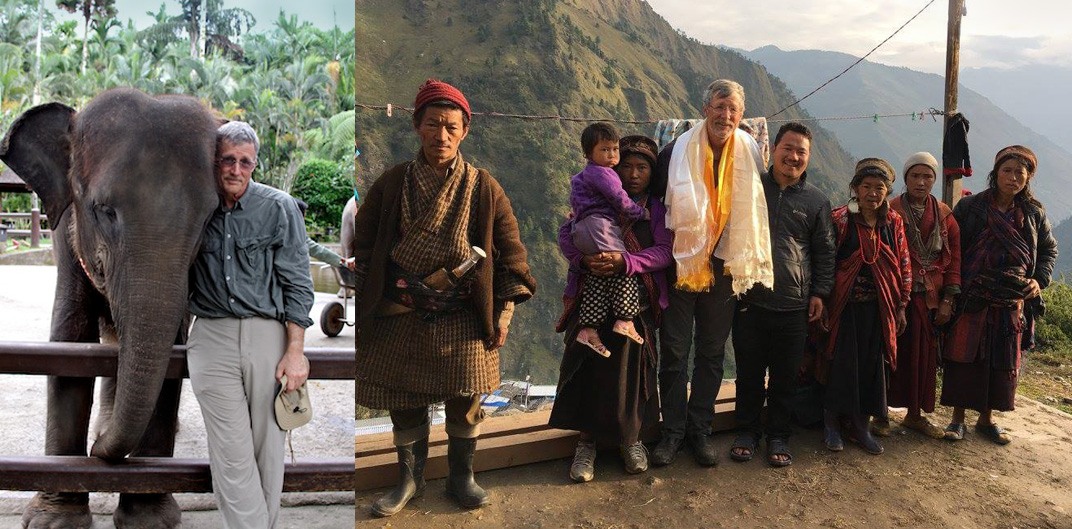
Frank James works 4 different jobs to make a living doing research, teaching and practicing medicine while holding teaching positions both at University of Washington in Seattle and Yang Ming School of Medicine in Taipei.
He has 4 children and lives with his wife, Jiasong and youngest son Taiming in Bellingham, Washington with Nyima their dog who last election cycle ran a serious race to become the County Prosecuting Attorney. His older offspring are all married with children of their own. Paul teaches at the local university, Matthias just finished his medical residency and is headed back to the West Coast to practice medicine and Sierra lives and works in East Timor and the last few years has been producing TV and feature length films that demonstrate how ordinary people can resolve conflict without violence.
Visit Frank James at:
Instagram: @travelmedicinenw
Flickr: www.flickr.com/photos/frankjamesmd
All images © Frank James, Photographer